10 Extinct NOPEs
mclewis_13
Published
09/04/2014
10 NOPEs you are glad you weren't alive to encounter.
- List View
- Player View
- Grid View
Advertisement
-
1.
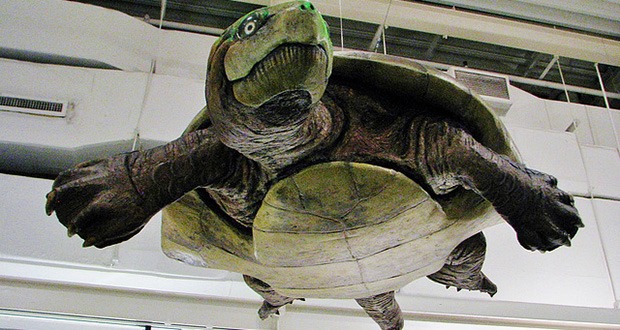 With a name that means carbon turtle, what harm could this thing possibly do? Other than being carnivorous, being the size of a Volkswagen, having a head bigger than a football, and a razor sharp beak that can slice through other animals with ease, nothing much.
With a name that means carbon turtle, what harm could this thing possibly do? Other than being carnivorous, being the size of a Volkswagen, having a head bigger than a football, and a razor sharp beak that can slice through other animals with ease, nothing much. -
2.
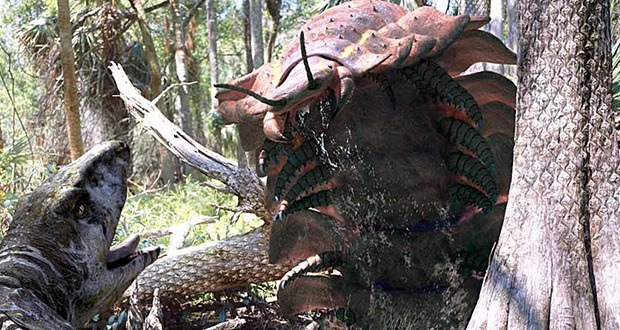 Perhaps one of the more well-known nopes in history, Arthropleura was basically a giant millipede the size of a car. It scuttled around ancient Carboniferous forests eating rotting plant matter. It was vegetarian, mostly. I mean, who cant resist a little bite of lizard once in a while if you're a giant millipede the size of a car?
Perhaps one of the more well-known nopes in history, Arthropleura was basically a giant millipede the size of a car. It scuttled around ancient Carboniferous forests eating rotting plant matter. It was vegetarian, mostly. I mean, who cant resist a little bite of lizard once in a while if you're a giant millipede the size of a car? -
3.
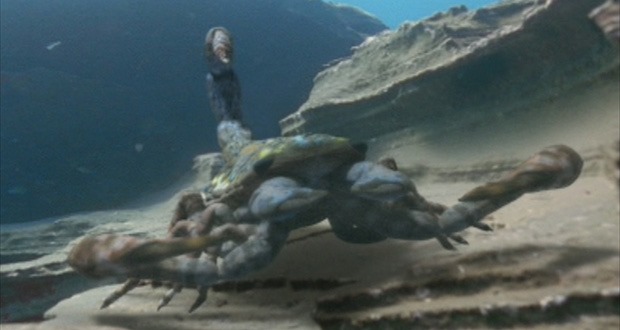 Scorpions are badasses, considering that they have existed in one form or another for over 400 million years. Another thing that makes scorpions badasses is that they grew large, like really really large. Brontoscorpio was a meter long with a stinger the size of a light bulb. But it was a sea scorpion with gills, so it couldn't have gone on land, right? Nope. It was one of the first animals to crawl out of the sea.
Scorpions are badasses, considering that they have existed in one form or another for over 400 million years. Another thing that makes scorpions badasses is that they grew large, like really really large. Brontoscorpio was a meter long with a stinger the size of a light bulb. But it was a sea scorpion with gills, so it couldn't have gone on land, right? Nope. It was one of the first animals to crawl out of the sea. -
4.
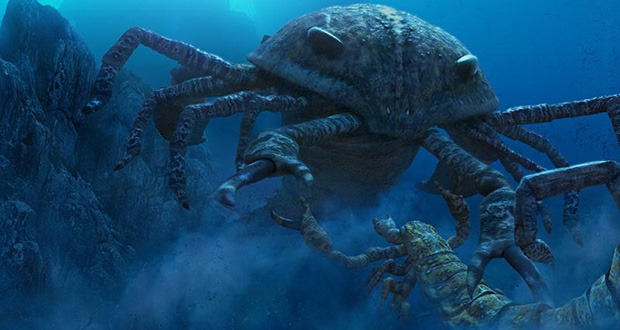 This thing makes Brontoscorpio look like a little puppy. A little armored puppy with pincers and a stinger the size of a light bulb. Jaekelopterus was the size of a crocodile with an appetite to match. It ravaged anything that stood in its wake. Other sea scorpions, ancient fish, ammonites, anything was on the dinner menu. It was also one of the largest sea scorpions in existence.
This thing makes Brontoscorpio look like a little puppy. A little armored puppy with pincers and a stinger the size of a light bulb. Jaekelopterus was the size of a crocodile with an appetite to match. It ravaged anything that stood in its wake. Other sea scorpions, ancient fish, ammonites, anything was on the dinner menu. It was also one of the largest sea scorpions in existence. -
5.
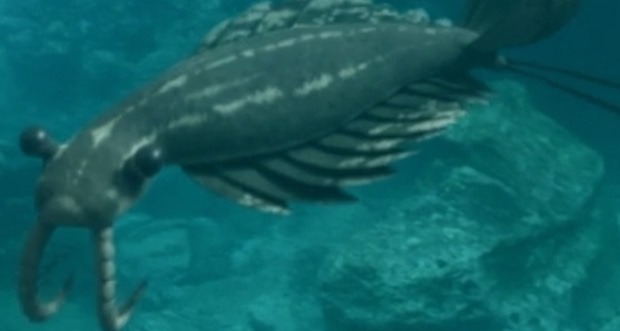 Earths first super predator, Anomalocaris is the smallest animal on this list. Growing to the size of your arm does make this abnormal shrimp that's what its name means rather creepy. It was also the largest of its species known as the anomalocarids.
Earths first super predator, Anomalocaris is the smallest animal on this list. Growing to the size of your arm does make this abnormal shrimp that's what its name means rather creepy. It was also the largest of its species known as the anomalocarids. -
6.
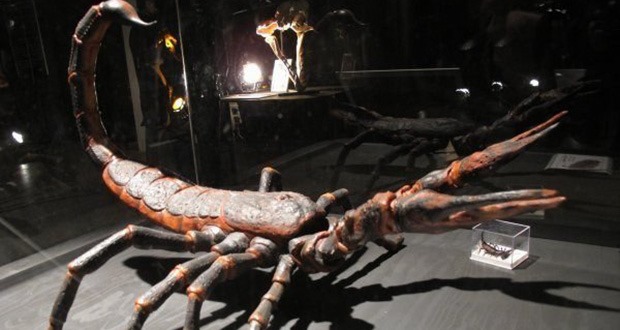 Great, another giant scorpion. Again, the badasses have returned to their massive sizes in the oxygen rich atmosphere of the Carboniferous period. Growing to the size of its ancient uncle, Brontoscorpio, it had a smaller stinger, but it was every bit as voracious. Thankfully for fish, Plumonoscorpius was fully terrestrial.
Great, another giant scorpion. Again, the badasses have returned to their massive sizes in the oxygen rich atmosphere of the Carboniferous period. Growing to the size of its ancient uncle, Brontoscorpio, it had a smaller stinger, but it was every bit as voracious. Thankfully for fish, Plumonoscorpius was fully terrestrial. -
7.
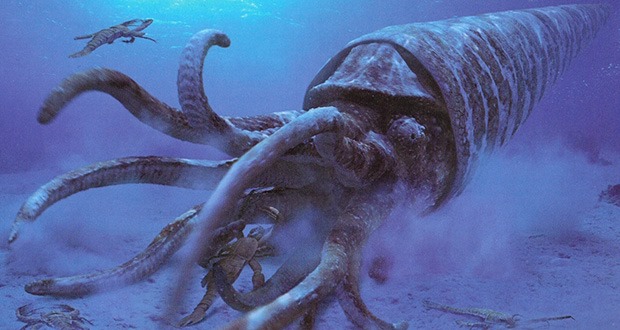 Imagine a kraken. Now put it in an armored ice cream cone. You get Cameroceras. This giant ancient ancestor of squids and octopi was a slow mover due to its 12 meter long shell. Nonetheless, it was powerful enough to take down sea scorpions and ancient predatory fish.
Imagine a kraken. Now put it in an armored ice cream cone. You get Cameroceras. This giant ancient ancestor of squids and octopi was a slow mover due to its 12 meter long shell. Nonetheless, it was powerful enough to take down sea scorpions and ancient predatory fish. -
8.
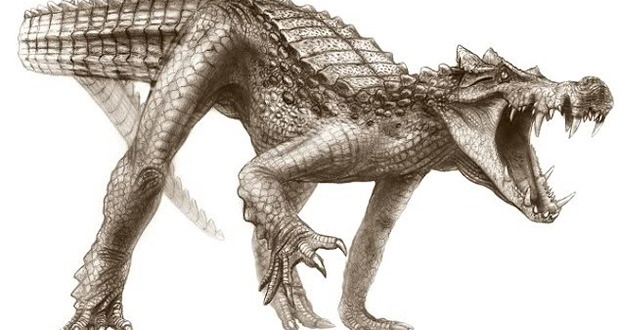 Crocodiles are pretty scary on their own right. They hunt in rivers and lakes, staying in the shallows to grab prey from the shore, but they rarely venture far from water. Enter Kaprosuchus, whose name means boar crocodile because of its long chompers. This thing was an all-terrain, six meter long killing machine. It could do what any crocodile could do. Go in the water, wait, attack, etc., but it also could run on land. So any living thing living in Cretaceous Sahara was fair game. Oh, and it could also kill dinosaurs.
Crocodiles are pretty scary on their own right. They hunt in rivers and lakes, staying in the shallows to grab prey from the shore, but they rarely venture far from water. Enter Kaprosuchus, whose name means boar crocodile because of its long chompers. This thing was an all-terrain, six meter long killing machine. It could do what any crocodile could do. Go in the water, wait, attack, etc., but it also could run on land. So any living thing living in Cretaceous Sahara was fair game. Oh, and it could also kill dinosaurs. -
9.
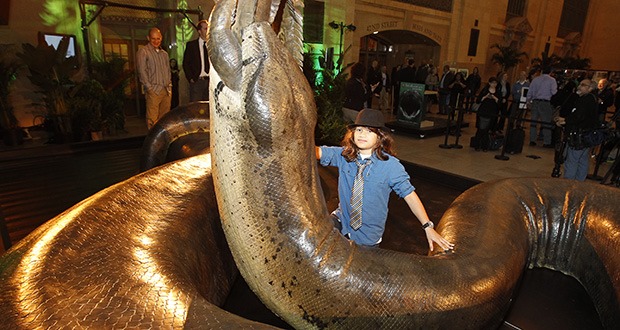 Snakes these days usually are pretty small. The largest, by mass, is the green anaconda. The longest is the reticulated python. Titanoboa would have eaten them as a snack. Measuring over 12 meters in length, it was the size of T. Rex and its diet usually consisted of giant crocodiles and turtles that shared its territory. Thankfully for Tyrannosaurus, Titanoboa lived right after the dinosaurs extinction, ruling the earth just as the dinosaurs did before it.
Snakes these days usually are pretty small. The largest, by mass, is the green anaconda. The longest is the reticulated python. Titanoboa would have eaten them as a snack. Measuring over 12 meters in length, it was the size of T. Rex and its diet usually consisted of giant crocodiles and turtles that shared its territory. Thankfully for Tyrannosaurus, Titanoboa lived right after the dinosaurs extinction, ruling the earth just as the dinosaurs did before it. -
10.
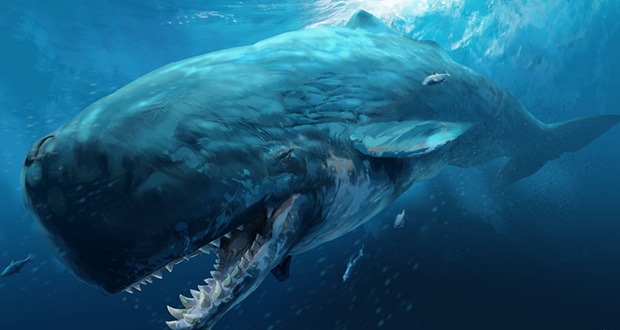 This giant whale would have made even Megalodon sharks cry. Megalodon was a giant shark with teeth the size of your hand. This whale trumps it. For starters Livyatan was named after the Biblical monster, the one that even God himself had to kill. Livyatan had teeth over a foot long. It grew larger than Megalodon. It hunted anything like baleen whales, beaked whales, dolphins, porpoises, sharks, sea turtles, seals and sea birds.
This giant whale would have made even Megalodon sharks cry. Megalodon was a giant shark with teeth the size of your hand. This whale trumps it. For starters Livyatan was named after the Biblical monster, the one that even God himself had to kill. Livyatan had teeth over a foot long. It grew larger than Megalodon. It hunted anything like baleen whales, beaked whales, dolphins, porpoises, sharks, sea turtles, seals and sea birds.
With a name that means carbon turtle, what harm could this thing possibly do? Other than being carnivorous, being the size of a Volkswagen, having a head bigger than a football, and a razor sharp beak that can slice through other animals with ease, nothing much.
10/10
1/10


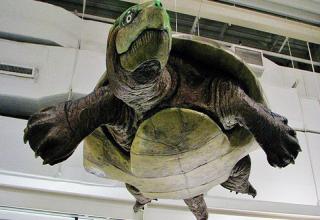




0 Comments